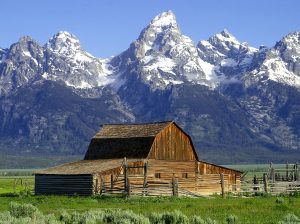
Grand Teton National Park
That Wyoming’s breathtaking Jackson Hole is at the forefront of sustainable travel should come as no surprise—nearby Yellowstone National Park, for which it is a gateway, was one of the country’s first conservation successes. Grand Teton National Park and the National Elk Refuge round out the valley’s triumvirate of protected areas, leaving just 3% of the county’s land available for development. Heading Jackson Hole’s participation in the GSTC program for sustainable destination is Tim O’Donoghue, Executive Director of the area’s Chamber of Commerce. He sees it as a way for the many stakeholders—government, businesses, nonprofits—who have already been seeking out sustainable solutions to come together and create a road map for the future. And his application had 25 different signatures from all three sectors to prove their commitment to collaborate.
O’Donoghue reports that the county has to date focused on energy efficiency—building according to LEED certification parameters, tapping sources of renewable energy, recycling, and the like. He’s eager for the GSTC’s consultant to help with their social sustainability. Many of the region’s tourism jobs are seasonal, making it hard for workers to remain in the community year-round. O’Donoghue imagines that encouraging more shoulder-season visitors—when the wildlife is more readily visible anyway—could end the cycle of short-term employment. What’s clear to everyone involved is that Jackson Hole’s protected areas are the critical factor in the region’s economy.




